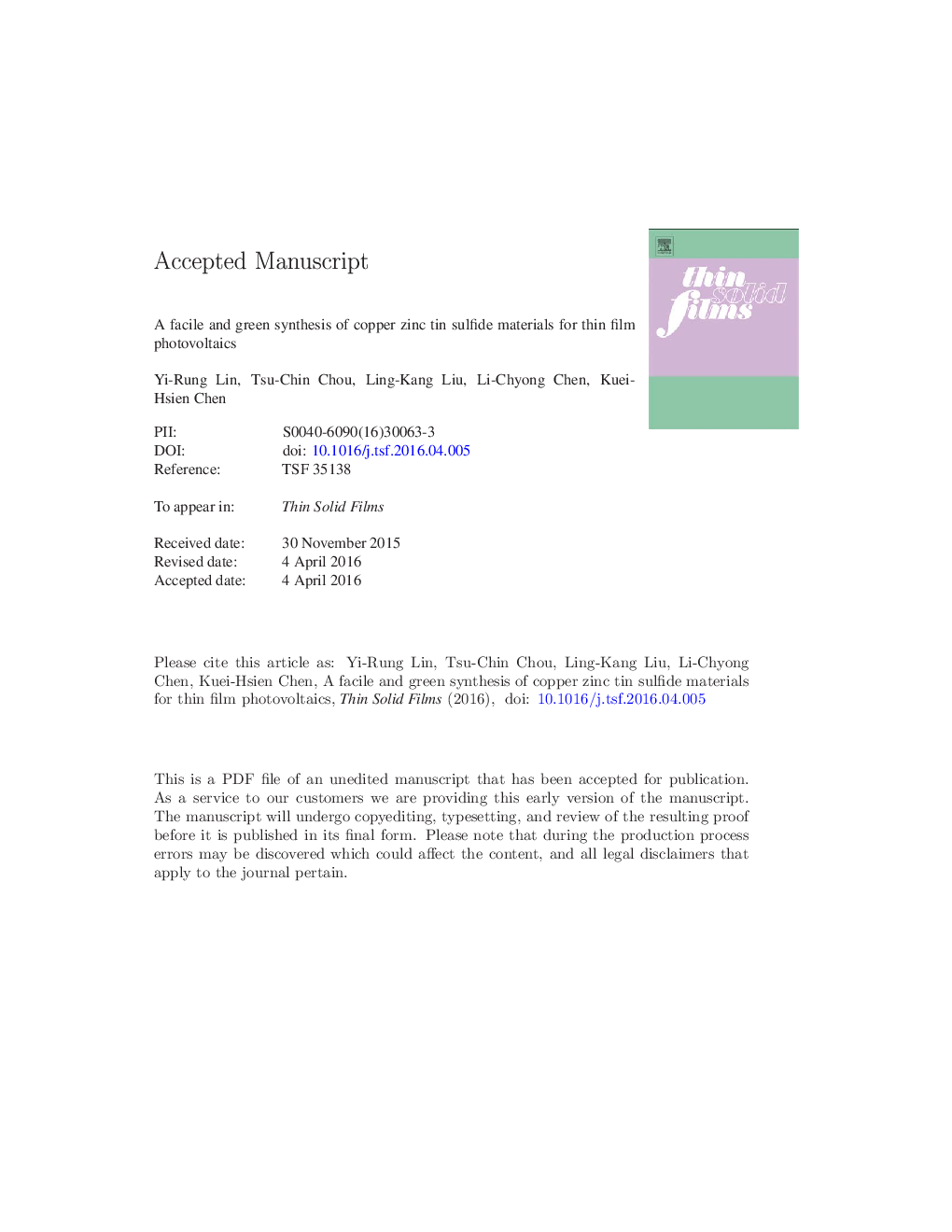| Article ID | Journal | Published Year | Pages | File Type |
|---|---|---|---|---|
| 5466550 | Thin Solid Films | 2016 | 26 Pages |
Abstract
Kesterite-type Cu2ZnSnS4 (CZTS) has been attracting a lot of attention in thin-film solar cells due to its relatively low cost, earth abundant and environmentally benign nature compared to its analog Cu(In, Ga)Se2 materials. Until now, solution-based processes are considered as promising methodologies for mass production of CZTS materials for industrial demands. However, most material sources are highly toxic as well as dangerous. In this study, we proposed a facile and green synthesis strategy for the CZTS absorber by taking advantage of an ultrasonic spray technique where we adopted metallic nanopowders and ethanol as our nontoxic precursors as well as solvents, respectively. The phase formation and transition mechanism of the synthesized CZTS film are investigated through varying sulfurization temperatures and analyzed using X-ray diffraction, Raman spectroscopy, and scanning electron microscopy. The solar cell device can be made at a scale as large as 20Â ÃÂ 20Â mm2, and the cell shows a power conversion efficiency of 1.5%.
Related Topics
Physical Sciences and Engineering
Materials Science
Nanotechnology
Authors
Yi-Rung Lin, Tsu-Chin Chou, Ling-Kang Liu, Li-Chyong Chen, Kuei-Hsien Chen,
